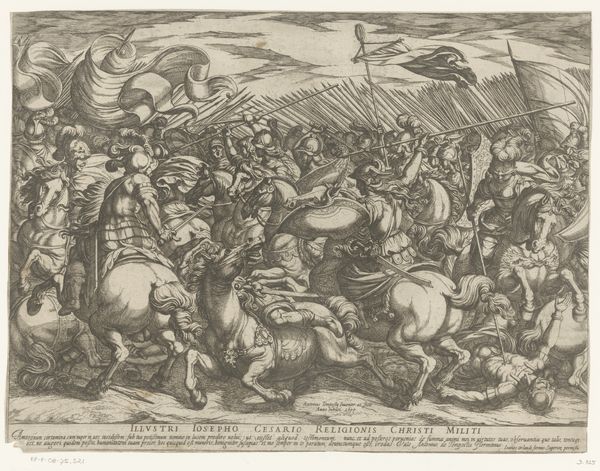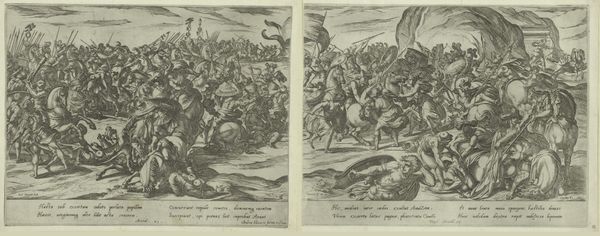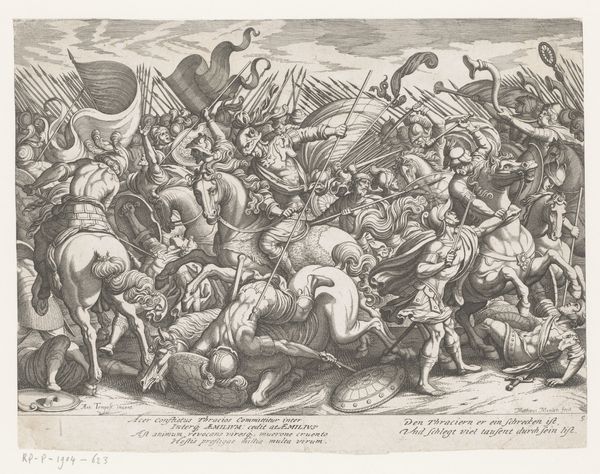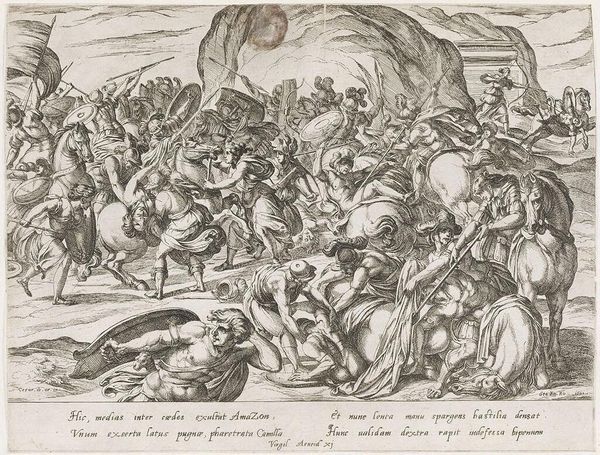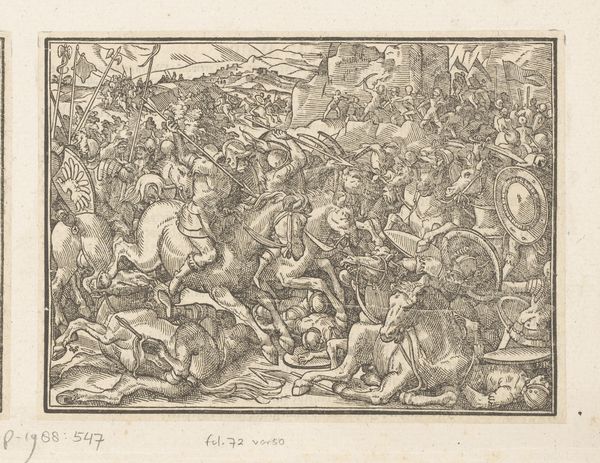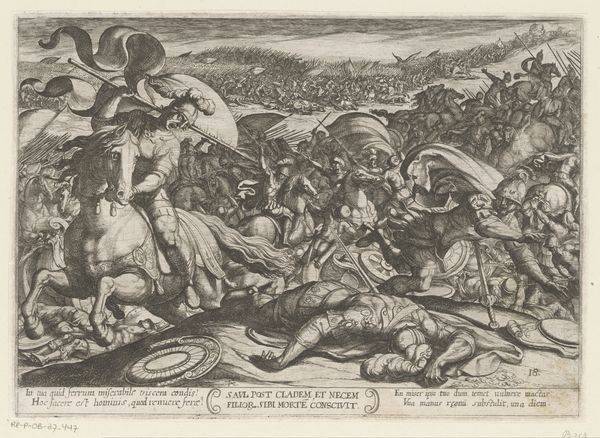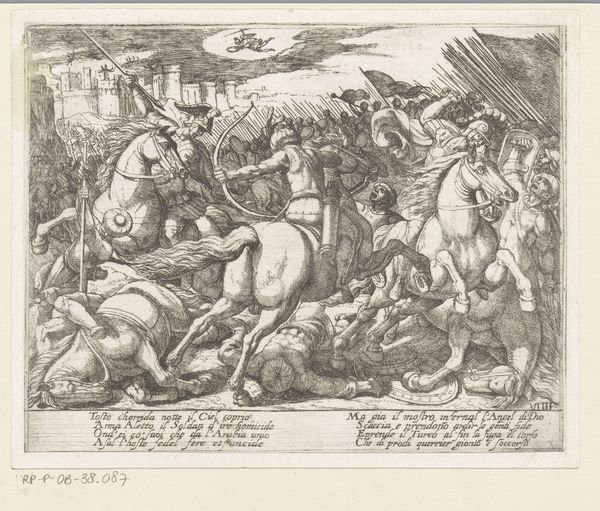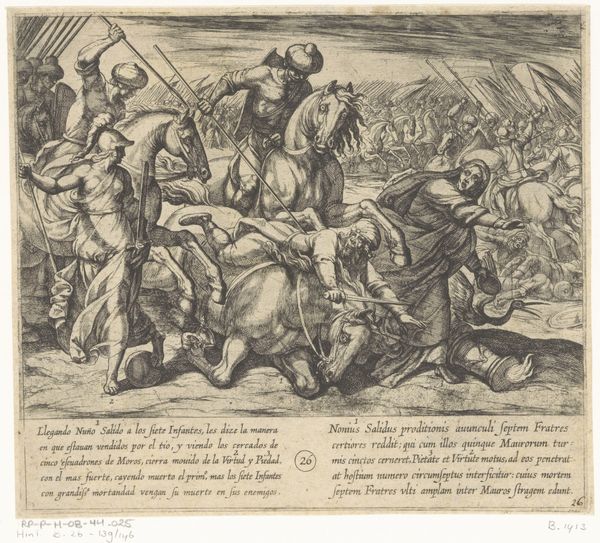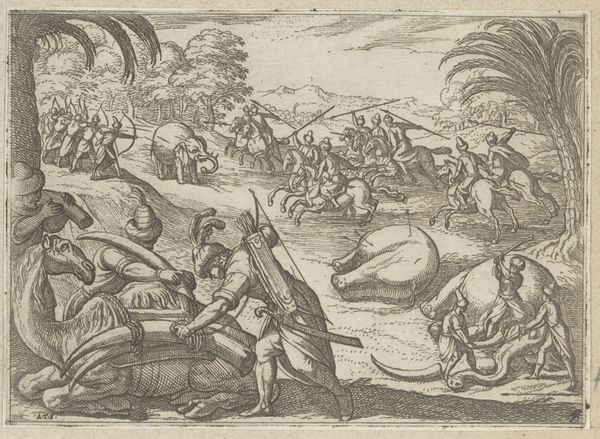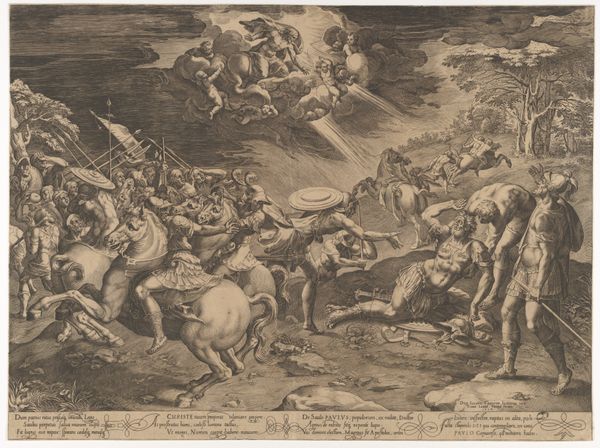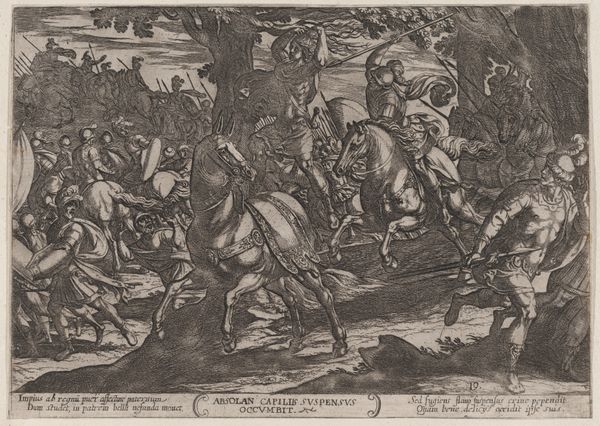
print, paper, ink, engraving
#
narrative-art
# print
#
pen illustration
#
pen sketch
#
mannerism
#
figuration
#
paper
#
form
#
11_renaissance
#
ink
#
line
#
pen work
#
history-painting
#
engraving
Dimensions: height 327 mm, width 424 mm
Copyright: Rijks Museum: Open Domain
Antonio Tempesta made this print of ‘The Death of Camillus’ around the turn of the 17th century, using etching and engraving techniques on paper. Tempesta combined these methods to create complex imagery. He would have first laid down the broad outlines of the composition by etching lines into a coated metal plate, and then worked back over the image with engraving tools to add finer details and greater definition. Look closely, and you'll see how the varying thicknesses and densities of the lines create a sense of depth and drama, almost like a movie scene. Prints like these weren’t just about artistic skill; they were a key part of the early modern media landscape. They allowed stories and images to be circulated widely, contributing to shared cultural narratives. In this case, Tempesta’s print brings ancient history to life, making it accessible to a broad audience. By mastering these printmaking processes, artists like Tempesta were not just craftsmen, but cultural influencers.
Comments
No comments
Be the first to comment and join the conversation on the ultimate creative platform.
